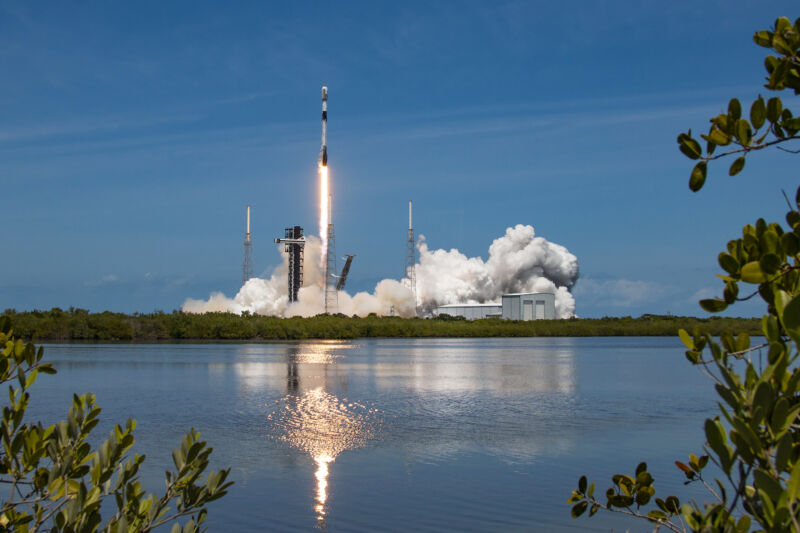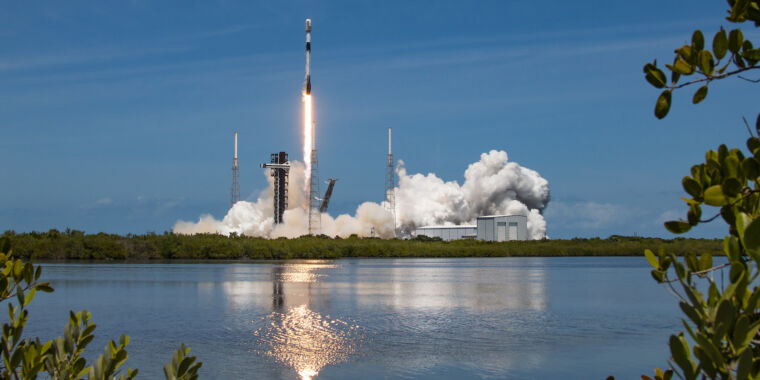
SpaceX
It was just 10 days ago that the Falcon 9 rocket’s upper stage failed in flight, preventing the rocket from placing its 20 Starlink satellites into proper orbit. Because they were released lower than expected — about 84 miles (135 kilometers) above Earth’s surface and subject to atmospheric drag — these satellites eventually reentered the planet’s atmosphere and burned up.
Normally, after a failed launch, a rocket lies idle for months while engineers and technicians go through all available data and debris to determine the cause, conduct tests, and find a solution.
However, according to multiple sources, SpaceX was ready to launch the Falcon 9 rocket as early as late last week. The company currently has a launch opportunity for no earlier than 12:14 p.m. ET (04:14 UTC) on Wednesday for its Starlink 10-4 mission.
A quick fix?
In a summary of the anomaly published shortly afterward, SpaceX offered no explanation for the failure, saying only: “The Merlin Vacuum engine experienced an anomaly and was unable to complete the second burn.”
Officially, the company has not provided any additional information since then. However, the company’s engineers were able to identify the cause of the failure almost immediately and, according to sources, the solution was simple.
SpaceX was confident enough in this resolve to resume launches of its Falcon 9 rocket a week after the failure. However, it is barred from doing so while the U.S. Federal Aviation Administration conducts an investigation into the accident.
For that reason, SpaceX filed a request with the FAA a week ago, on July 15, to resume launches of its Falcon 9 rocket while the anomaly investigation continues. “The FAA is reviewing the request and will be guided by data and safety at every step of the process,” the FAA said in a statement at the time.
Manned missions on deck
SpaceX is currently awaiting a decision from the FAA on whether it can resume Falcon 9 launches, less than two weeks after the outage occurred.
The company plans to launch at least three Starlink missions in quick succession from its two launch pads in Florida and one in California to determine the solution’s effectiveness. It wants to demonstrate the reliability of the Falcon 9 rocket, which has logged more than 300 successful missions since its last failure during a pad accident in September 2016, ahead of two upcoming crewed missions.
There is still a remote possibility that the Polaris Dawn mission, led by commercial astronaut Jared Isaacman, will launch in early August. This would be followed by NASA’s Crew-9 mission, which will take four astronauts to the International Space Station.
Notably, neither crewed mission required a second burn of the Merlin engine, unlike the Starlink mission earlier this month.
